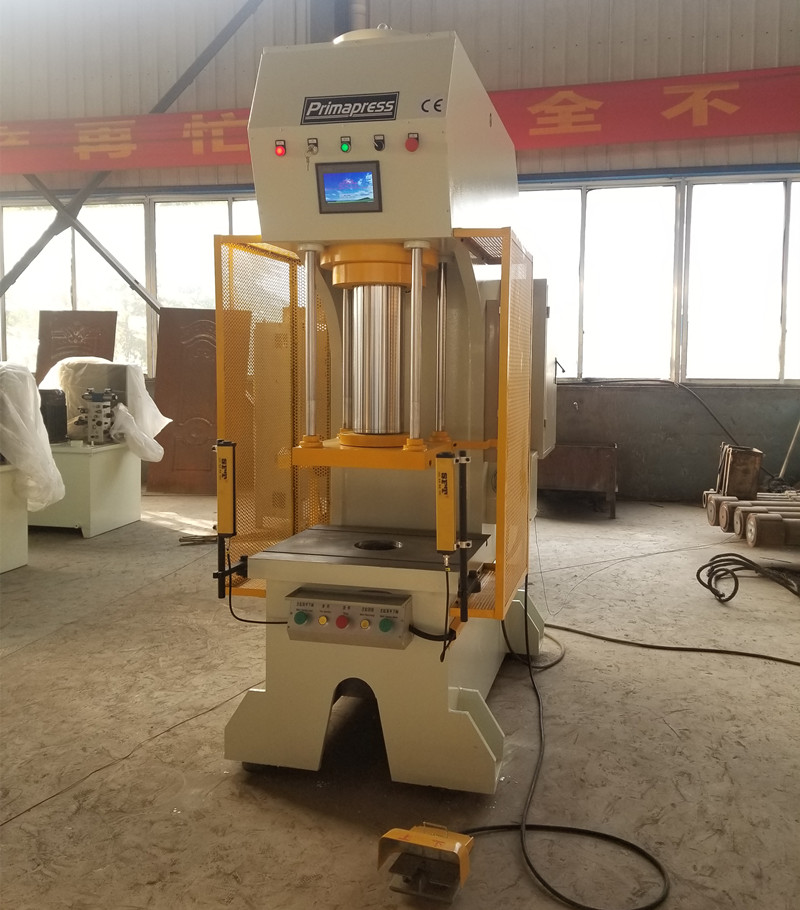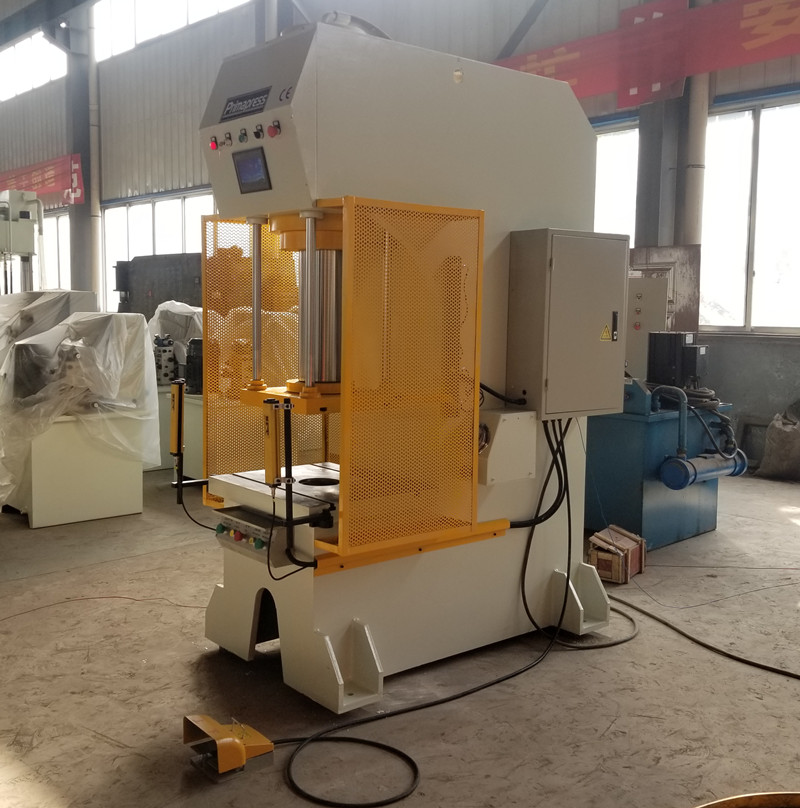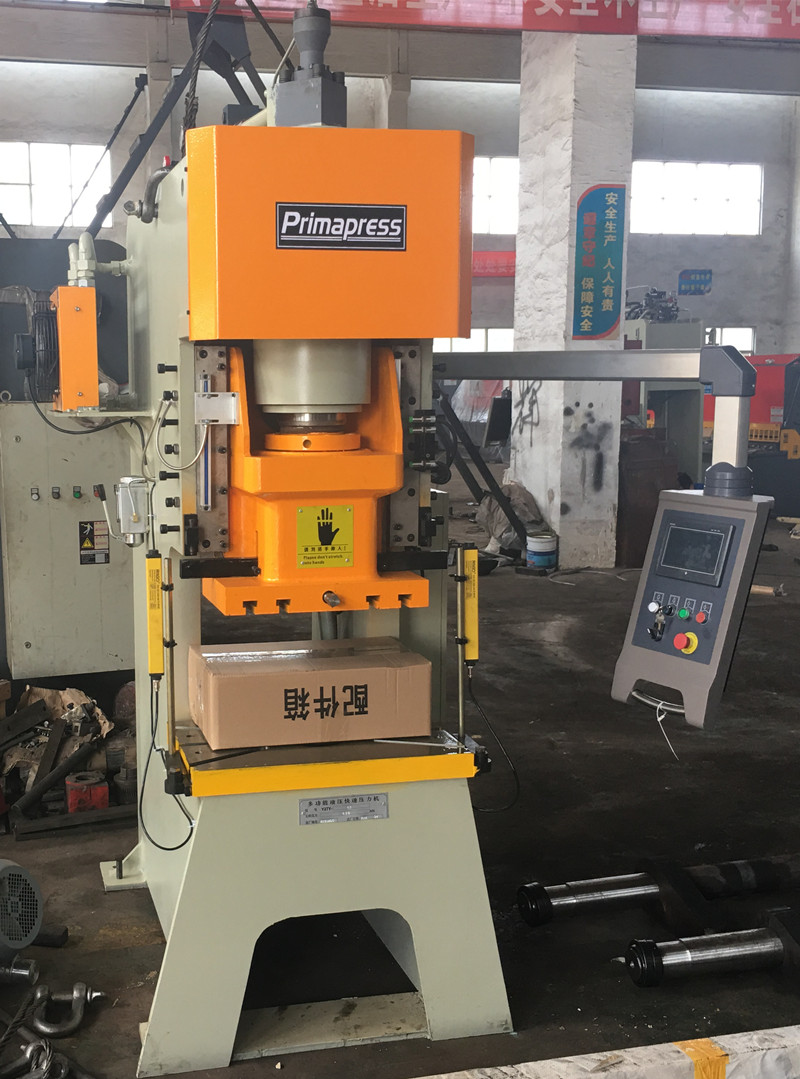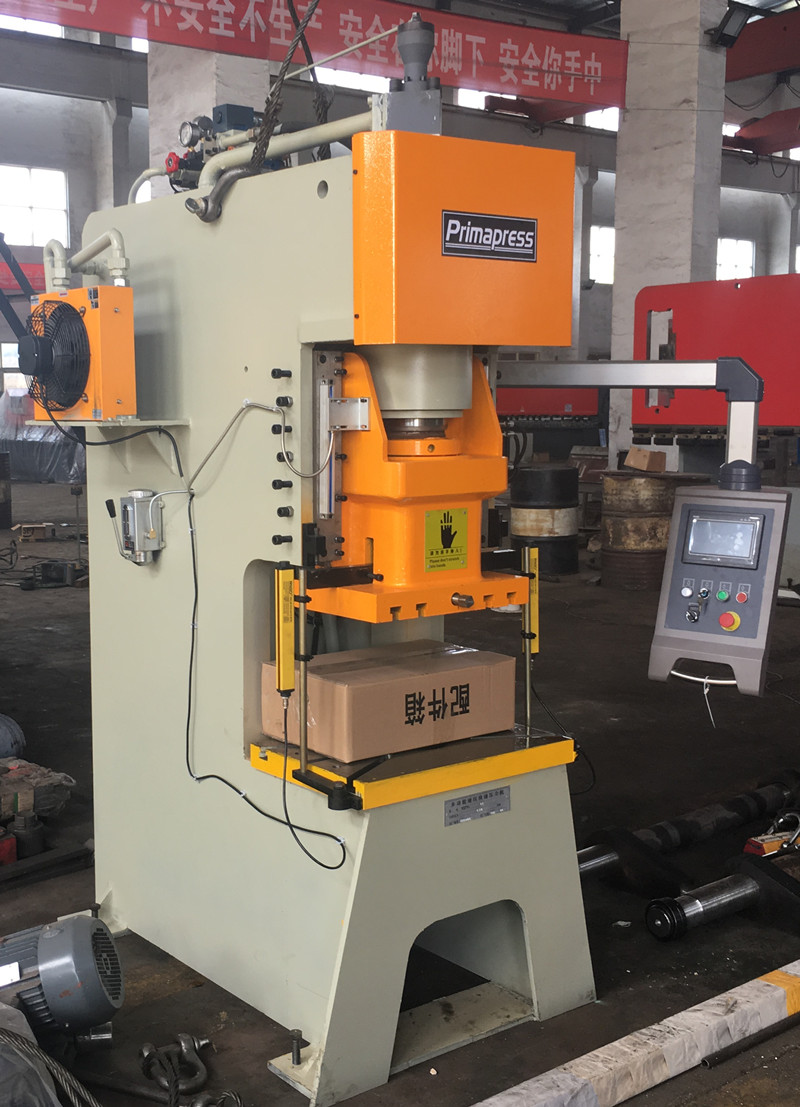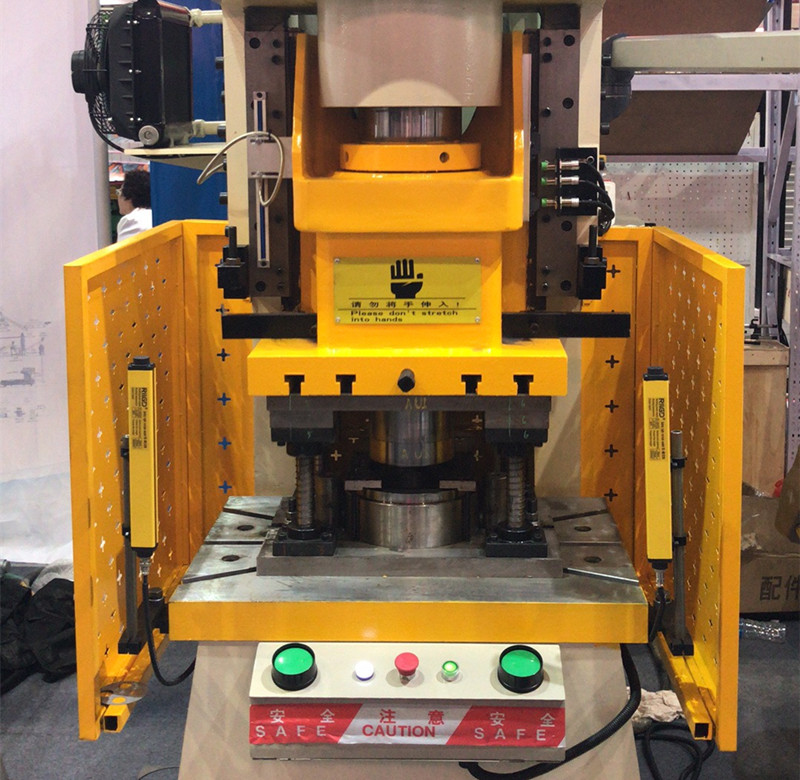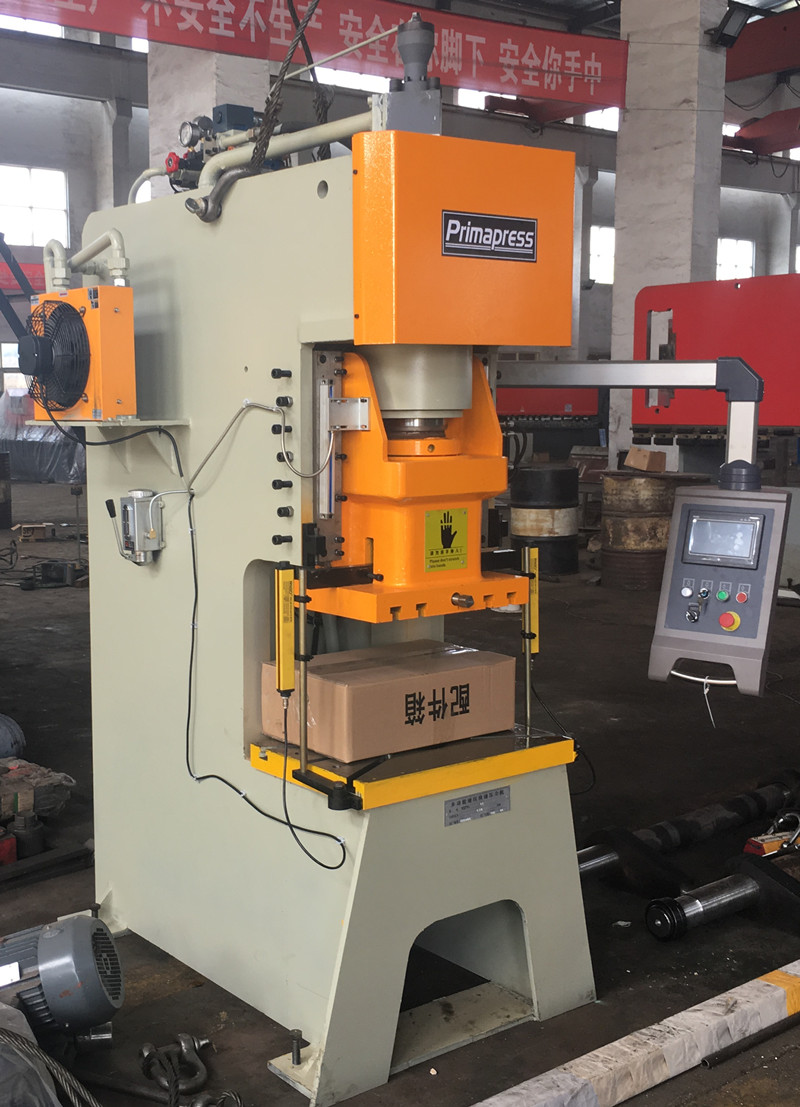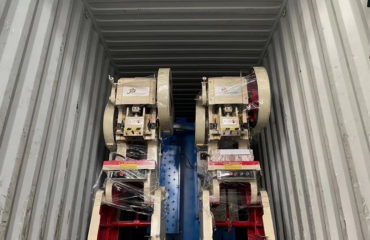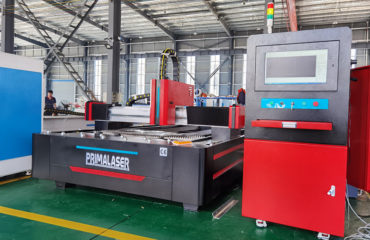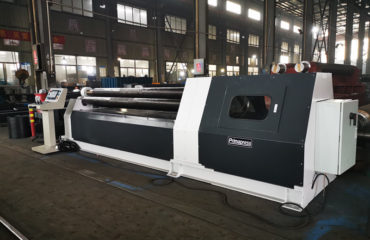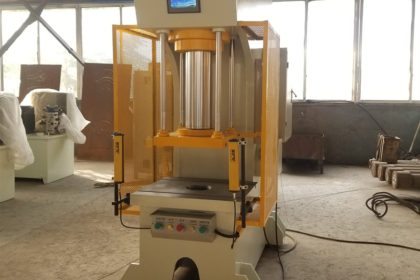
Main components and application areas of single column hydraulic presses machine
Before we use a single column hydraulic press, we must first understand what components it is made of, so that we can better understand it and grasp its operating laws. Then it is mainly composed of several parts such as the bed part, the clutch, the slider, the brake band, and the manipulator. These parts work together to complete the entire operation process. In the article, the editor will give you a detailed introduction to the main components of the single column hydraulic press and its application advantages.
Before we use a single column hydraulic press, we must first understand what components it is made of, so that we can better understand it and master its operating laws. Then it is mainly composed of several parts such as the bed part, the clutch, the slider, the brake band, and the manipulator. These parts work together to complete the entire operation process. In the article, the editor will give you a detailed introduction to the main components of the single column hydraulic press and its application advantages.
The main components of the single column hydraulic press:
- The bed part
The bed part is that the bed and the worktable of the single column hydraulic press are cast iron parts.
- Clutch
When the press is not working, the cam of the manipulator pushes against the tail of the rotary key. At this time, the crankshaft is idling, and the slider stops at the top dead center; when the press is working, the cam of the manipulator rotates through an angle to let the tail of the open key.
The back of the working part enters any one of the three circular grooves in the middle sleeve, the clutch is in the combined position, and the slider moves up and down.
- Slider
In the slider, there is a depressing fuse under the ball bowl that is in contact with the ball head of the adjusting screw, which ensures that the press will not be damaged when overloaded. Open the square cover on the front to replace the fuse.
- Brake belt
The left end of the crankshaft is equipped with an eccentric brake band. When the clutch is disengaged, it overcomes the inertia of the reciprocating motion of the slider and ensures that the crankshaft stops at the top dead center.
- Manipulator
The mechanism that controls the clutch engagement and disengagement during the manipulator. By changing the connection position of the manipulator rod, two actions of single stroke and continuous stroke can be obtained.
Application advantages of hydraulic punch:
- The single column hydraulic presssystem is a single-pump, open-type and series-connected system. It adopts a series combination of reversing valves. Not only can the actions of each mechanism be carried out independently, but also in light-load operations, it can realize the composite action of lifting and turning, so that the Improve work efficiency.
- The hydraulic punch adopts a three-position four-way manual reversing valve for reversing, which can not only control the reversing action flexibly and conveniently, but also control the flow through the handle operation, realize throttling and speed regulation, and also realize the micro-speed action of each working part. .
- Each three-position four-way manual reversing valve of the single column hydraulic pressadopts the M-type neutral function, so that the system can be unloaded when the reversing valve is in the neutral position, which can reduce the power loss of the system and is suitable for intermittent work of cranes. .
- The reversing valve controls the chuck for the single column hydraulic press, realizes the conversion between high pressure and low pressure clamping, and adjusts the size of the high pressure clamping or low pressure clamping pressure respectively. In this way, the clamping force can be adjusted according to the working conditions, and the operation is convenient and simple.
- The reversing valve of the hydraulic punch press controls the reversing of the hydraulic cylinder of the tailstock sleeve to realize the extension or retraction of the sleeve, and can adjust the pre-tightening force when the tailstock sleeve is extended to adapt to different needs.
To sum up, after listening to the introduction of Primapress, do you know more about single column hydraulic presses machine? In the process of actually operating it, we must pay attention to using the correct operation method!
Comparison of hydraulic punch and ordinary punch
In today’s punch press market, there are more and more applications of this equipment, but in order to meet the application needs, manufacturers have more and more varieties, and their performance advantages are becoming more and more detailed. Among them, hydraulic punch presses are compared with ordinary punch presses. What are the differences between the two after all.
- The single column hydraulic pressadopts a four-column and three-plate structure, and the friction coefficient from the power system can be reduced a lot, and the press can still maintain a considerable accuracy during long-term forehead movements. Die life is extended.
- Ordinary punches are straight-through type, and there is no controllability for downward pressure. The power of the single column hydraulic presscan be adjusted at will.
- The working noise of ordinary punching machine is usually large, such as direct punching. Hydraulic punching machine adopts controllable speed punching, and the decibel is much smaller.
In summary, the strength of the ordinary punch is not adjustable, while the hydraulic punch can adjust the pressure. The stroke of the ordinary punch is not arbitrarily controlled, while the hydraulic punch has a stroke, which can be limited at will, so when we choose, do not Thinking about the price blindly, you must understand what you need to avoid wasting money.
